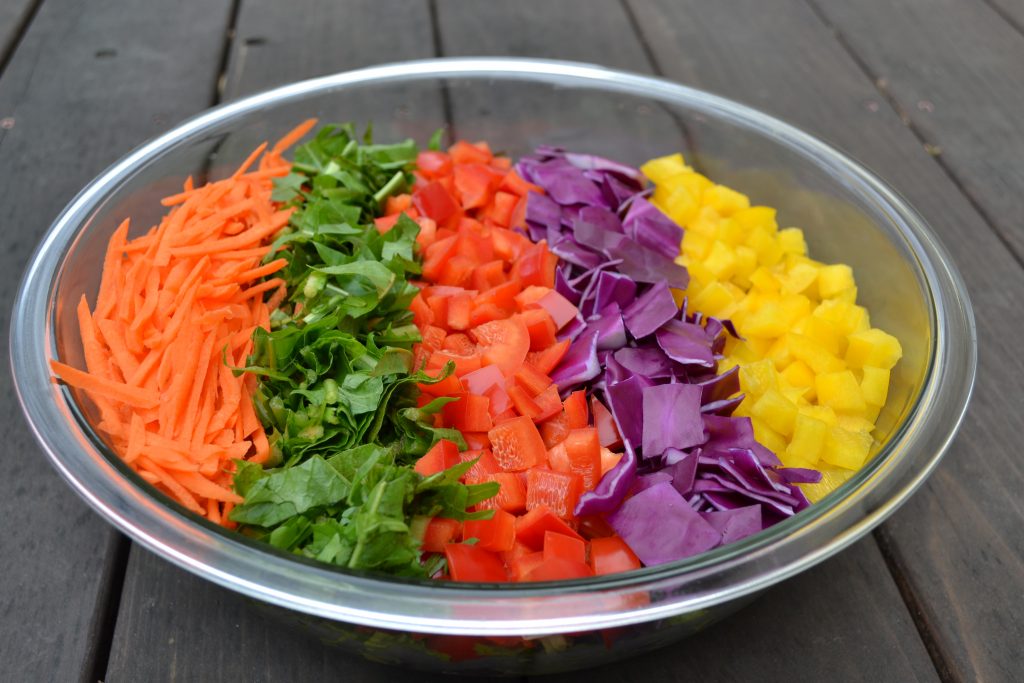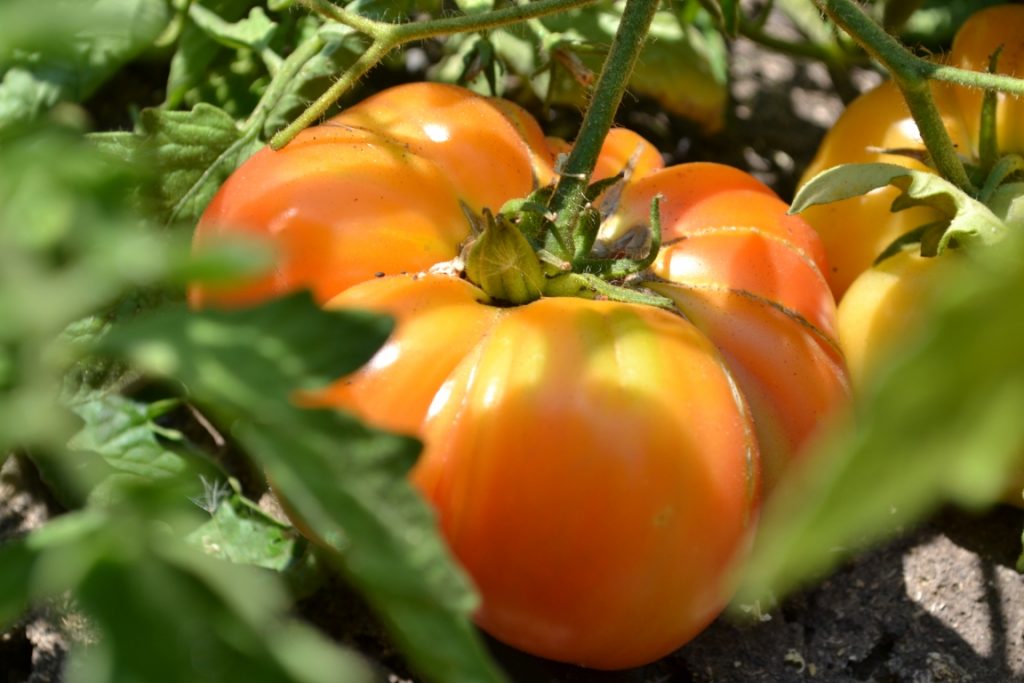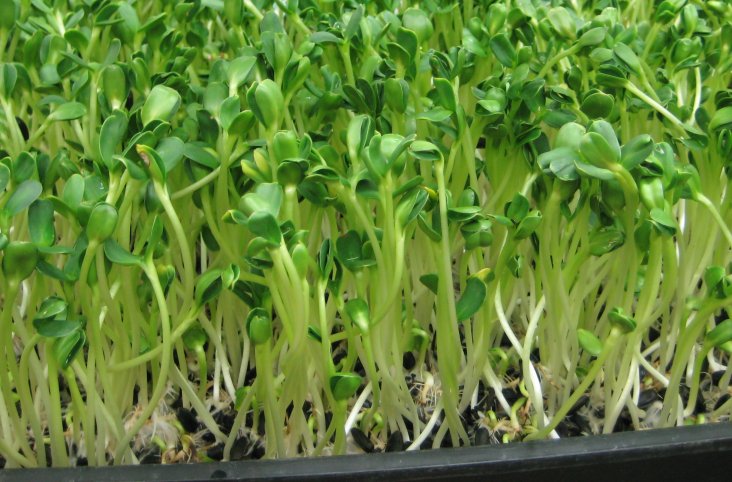
Day 4 of my top 30 for 30: When I first got started on my raw path over 30 years ago, there were not the food resources available we have today. I purchased my food at a regular grocery store because that was all that was available to me where I lived in the northeastern US and even though I did not have access to organic food at the time and didn’t have a wide variety of produce options then, my health improved dramatically.
It certainly can be challenging to eat healthy food consistently if it’s hard to find or if it is too costly. Rick and I have listed below several options for purchasing produce other than traditional grocery or health food stores:
1) Farmers Markets
One of the main benefits of farmers markets is that the food is grown locally, and tends to be fresher than food found in a store. At farmers markets in the area where we now live in northern California, organically grown or pesticide-free food is fortunately easy to find. Because the food is local and fresh, one may often find a much greater variety of produce compared to what is available in a store, where shelf life and transportability are major concerns that dictate availability. We look forward to each season to buy the freshest local food. For example, we love peaches and other stone fruit in the summer, and look forward to pomegranates in the fall and persimmons in late fall and early winter.
As you get to know some of the farmers at your local market, you can inquire to see if they would be willing to sell you larger quantities than the average consumer purchases, for a discounted price. Some will and some won’t. We have been fortunate enough to find some good sellers who know that we are raw food enthusiasts and will buy in quantity from them consistently if they offer us a good deal. As there are many other raw food enthusiasts in our area of northern California, many farmers are familiar with the benefits of selling in quantity.
You will tend to get especially good deals on items in season. This seasonal model works out as a double bonus as you get lots of high-quality fresh produce and at a great price. In the summer for example, we often eat a lot of raw zucchini with tomato-based dressing. Dr. Rick has been known to shred up 6-8 zucchini into a large mixing bowl which he tops with his favorite tomato dressing for dinner.

2) Wholesale produce markets
We have visited wholesale markets in both the San Francisco bay area and the New York metro area. We live in the SF bay area, so when we buy from our local wholesale produce market we buy enough food to last the two of us about 2 weeks. Why so much? The food available at wholesale markets is sold in boxes or cases. This works well for us because the produce is so fresh, that it lasts for often weeks at a time in our large-capacity dedicated refrigerator.
On average, we spend about 50% less on produce from the wholesale markets than we would spend on the same amount of food at a natural foods retail market or average farmers market prices. A good example is organically grown Romaine lettuce, which at our local farmers market and in a retail store in our area cost about $2 or more per head. In the summer of 2015, we paid $21 for a 24 head case of very fresh organically grown Romaine lettuce. This price does vary depending on the season. Sometimes cases of romaine may cost $40 or more, but the retail prices at that time are more like $3 per head. In 2020, these prices are similar. It is interesting to note that the romaine lettuce in retail markets are often much smaller than those sold at wholesale, because they are not as fresh and have had several of the outer leaves picked off. We have found that when we buy lettuce at wholesale, the heads are very large, since very few, if any of the outer leaves have been removed.
The wholesale markets we have visited often have a wide variety of produce, since there are many produce vendors who obtain their food from local, domestic, and international farmers. We really enjoy going to the wholesale markets because of the wide variety of food available, especially organic and locally produced. A very large percentage of the food that we eat is organically grown and local. This is one of the benefits for us of living in a major metropolitan area of California where we can access the year-round wholesale produce markets and farmers markets.
Wholesale produce markets are usually further away from home than local retailers, and often are open during overnight hours instead of during the day. While this can present some challenges, we have found it well worth the effort, as for the next two weeks or so we barely have to buy anything in a retail store, have fresher food, and save thousands of dollars per year. On the whole it is also much more convenient to purchase a car-load of food in cases, as opposed to having to run all of that food through a retail cash register. We would often find it a challenge to load up all the produce on the conveyer belt that was not nearly large enough for all of the food, and try to supervise the bagger not to damage any of the produce. At the wholesale produce markets, those issues don’t exist. You either carry the cases yourself, which is great exercise, or if you purchase larger quantities the sellers may bring your order on a pallet right to your car, as we have experienced. Everything is well-packed, protected, and easy to transport.
It is important to mention that wholesale produce sellers are often located in industrial areas with loading docks. It is sometimes very noisy with trucks and pallet loaders zipping around, so while shopping, we have to be constantly aware of our surroundings. We are fine with that, as it is well worth it on the whole to get large quantities of very fresh produce very conveniently at about half the price of retail. We are very fortunate to have Earl’s Organic Produce in San Francisco, where we know most of the people there at this point and have been “regulars” for many years.
We have spoken to some of our students who have considered purchasing food at wholesale markets, but think that cases of produce would provide too much food for them, so they have thought of starting:
3) Produce buying clubs
This strategy allows one to buy fresh produce in quantity with a group of people, who then share the produce. This can help keep produce costs down, while not having to buy individually in such large quantities. Dr. Rick started a produce buying club with a friend while in graduate school. They ordered produce for the group weekly and people would come over to their apartment and pick up their order on specified days. This model worked reasonably well, most of the time. Rick found that the biggest challenge was people in the group not picking up their produce at the specified times, and people would be coming over at times he needed to study. He did have a busy schedule between work and school, so the hours that he was available for pick up were somewhat limited. Also, although there was a minimum order, he had many people in the club who would buy small quantities such as a bag of raisins and a few apples, which meant more small transactions taking up a lot of time. Also, back in the mid 90’s, before the use of personal computers and the internet were widespread, there were a lot of logistics that made things a lot more complicated than they are today.
We think this model would work well for a small group of committed people with pick-up hours amenable to all group members. One could maybe even share the produce pick-up or delivery responsibilities. In the past few years, we have seen many examples of produce buying clubs that work well. We occasionally do some of this informally, such as when we buy a whole case of avocados, which is a lot for us. We’ll typically call some produce-based raw food friends and see if they would like to buy half the case from us. Another example is at times we have split a 20-pound case of dulse with one or more raw food enthusiast friends who live in our area.
4) Community Supported Agriculture (CSA) Programs
In this type of program, one “buys in” to the harvest of a local grower or group of growers. Each week when the produce is harvested it is split up among the CSA members who pick up the produce at a specified time and place. This often results in being able to obtain the freshest and most local produce available. We have admittedly not taken advantage of any such programs in our area, as our other methods work well for us.
5) Costco and other wholesale clubs
We are delighted that Costco has been increasing its offerings of organic produce over the past few years. We often use Costco for produce purchases to “fill in” between trips to our organic wholesale supplier. We can buy for example some green and some yellow bananas for staggered ripening so we almost always have ripe bananas available to eat and use in smoothies. Costco also has an excellent selection of organically grown frozen fruit such as mangoes and berries for making smoothies. The prices at Costco are comparable to what we find at wholesale produce markets, often approaching half the price of retail natural food markets. When you don’t need an entire case of something, Costco can come in handy as well.
Other wholesale clubs are following suit so it may be worth checking out those in your area.
6) Mail order
There are times and circumstances that purchasing food through the mail may make sense. For example, buy organically grown sundried tomatoes through the mail from a company that has been around since before our early days of raw food eating. We use the sundried tomatoes in tomato-based salad dressings to add thickness and concentrated flavor. We like the tomatoes more and can get better prices than those that we were previously purchasing from our wholesale organic supplier.
Here is another tip that will interest some of you. Many of you have heard that raw almonds can no longer be sold at retail stores. However, you can buy raw almonds directly from farmers, including mail order. Although almonds are not a staple in our diets, we do occasionally enjoy them, and we have at times purchased a bag through the mail directly from a farmer who sells organically grown raw almonds.

Since we live in northern California, we take advantage of our year-round growing season and have our own:
7) Outdoor garden
We are so thrilled to be able to grow all kinds of food year-round in our own yard! Of course, since we live in northern California somewhat close to the coast, we do have some limitations. We can grow lettuce, tree collard greens, kale, and other leafy greens year-round. In the spring, summer, and fall, we can grow tomatoes, cucumbers, summer squash, and zucchini, sunflowers, Jerusalem artichokes, basil and other culinary herbs, grapes, and bell peppers, just to name a few. We also have fig, lemon, and lime trees. At some point we plan to plant a persimmon tree and other fruit trees that grow well grow here in this Mediterranean climate. Even though we can grow food year-round, some years we have experienced an occasional frost, so we are prepared with coverings for our most vulnerable plants. From mid-summer to early fall we often skip buying any lettuce, tomatoes, or zucchini as our garden supplies more than enough for us. We rarely ever buy collards as we have a consistent year-round supply in the back yard.

At various times, we have had an:
8) Indoor garden
In the past we have grown wheatgrass and sunflower greens indoors and we regularly sprout lentils and green peas. Admittedly, we go through phases with indoor gardening and our endeavors have been much more off than on, but whenever we grow food indoors we find it to be very rewarding. There are so many foods that can be grown indoors in small spaces. We have visited people who live in large cities and have very little space to grow food, but they have very successful indoor gardens. Indoor gardens can also be aesthetically beautiful while giving a space an ‘aliveness’ that plants can provide.
I (Karin) personally get great satisfaction from gardening, which started in childhood, when my dad involved me in planting and caring for the family backyard garden. From a young age, I had the experience of knowing how plant foods are grown and had a great appreciation for this process. We can only hope that many of you will give yourself and your family the opportunity to grow food, even if it is as simple as growing a culinary herb on a window sill.
9) Other food sources
Of course, there are also the obvious other places to buy whole natural plant foods such as local food co-ops, natural food restaurants, natural food markets, and the organic sections of regular supermarkets. Nowadays, there are so many options available in different areas. Check out the options in your area, or perhaps there will even be opportunities to create some of your own.
Even if you don’t take advantage of the methods above, eating a raw food diet in the modern world is still very feasible and extremely well worth it! For years we each, both before and after we became a couple, purchased most of our food from retail stores and that worked just fine for us. Freshness, greater abundance, and lower cost is great, but even at retail one can still make eating a raw food diet work in the real world. In other words, don’t let anything said here become the limiting factor in your pursuit of health.
